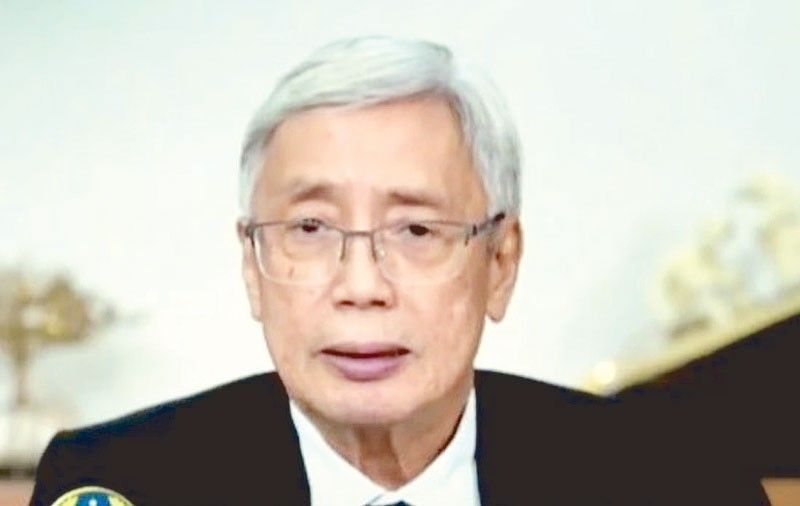BSP poised for more, but softer rate hikes

MANILA, Philippines — The Bangko Sentral ng Pilipinas (BSP) is expected to deliver more rate hikes until the first quarter of next year as inflation remains elevated and above the government’s two to four percent target range.
In an interview with Bloomberg Television, BSP Governor Felipe Medalla said the likelihood of a pause from the ongoing tightening cycle is low.
“As we keep saying, it’s data dependent. But the likelihood of zero in the next two meetings is extremely low,” Medalla said.
The BSP raised its key policy rates by a total of 350 basis points this year, bringing the benchmark interest rate to a 14-year high of 5.50 percent from an all-time low of two percent to tame inflation and stabilize the peso.
This was the highest overnight reverse repurchase rate since the six percent in November 2008.
Inflation averaged 5.6 percent from January to November, exceeding the central bank’s two to four percent target range. Prices are expected to accelerate further and peak this month after inflation hit a 14-year high of eight percent in November from 7.7 percent in October.
“The reason we’re way above the inflation target are supply shocks that we expect to wane,” Medalla said.
The BSP has decided to retain its inflation forecast at 5.8 percent for this year, but raised its projection to 4.5 percent for next year.
According to Medalla, inflation is likely to ease back to within the two to four percent range by the third or fourth quarter of next year.
“In other words, what we have to do is do more to make sure that happens. In that sense, we have done enough, but we have not done enough because we really do not expect, for instance, the Fed (US Federal Reserve) to do zero,” he said.
He also cited that the inflation forecasts of economists and analysts are higher than the projections of the BSP.
“Maybe we have to do some more to convince them, they should revise their forecasts downward,” Medalla said.
He explained that economists would be convinced to lower their projections once the month-on-month inflation returns to 0.3 or 0.4 percent.
“Initially we said (inflation) year-on-year will peak in October. Then it turned out November was higher than October, and now we expect December to be higher than November. So we have actually revised our forecast of when the inflation will peak,” Medalla said.
The uptick, he pointed out, was largely due to the impact of weather-related disturbances that led to shortages in fruits and vegetables.
“On the other hand, the weak peso is no longer the problem, and we are also seeing fuel prices go down. That is why we are confident that relative to our forecast of what inflation will be three to four quarters from now, our real policy rates are already clearly positive. But then we really have to do more to convince markets how serious we are about making sure that inflation will be back to normal by the second half of next year,” he said.
After slumping by as much as 15.7 percent to hit an all-time low of 59 to $1, the peso has rebounded strongly back to the 55 to $1 level amid the intervention of the BSP in the foreign exchange market to smoothen volatility as well as the series of aggressive rate hikes as it matched the increases delivered by the US Fed point by point to maintain a 100-basis-point differential.
For 2024, the BSP sees inflation falling below the target range at 2.8 percent.
Early this month, the Cabinet-level Development Budget Coordination Committee (DBCC) decided to retain the current inflation target of two to four percent for 2023 to 2024. It also set the target for 2025 and 2026 at two to four percent.
“This announcement of the medium-term inflation target is in line with the BSP’s commitment to transparency and accountability as well as the forward-looking approach in the conduct of monetary policy,” it said.
According to the central bank, the two to four percent target continues to be an appropriate quantitative representation of the medium-term goal of price stability that is optimal for the Philippines, given the current structure of the economy and outlook for macroeconomic conditions over the next few years.
“The Philippine economy is expected to sustain its growth momentum going forward, underpinned by easing mobility restrictions, increased investments, as well as the resumption of business and tourism-related activities,” the BSP said.
It said that domestic demand is expected to remain firm amid the monetary policy tightening implemented by the BSP to safeguard price stability.
“The policy interest rate increases will also support the medium-term growth outlook as price stability promotes efficient allocation of resources and preserves the purchasing power of households,” the central bank said.
Global oil and food prices are expected to moderate over the policy horizon, thereby easing the pressures on prices of domestic goods.
However, domestic agricultural production continues to face challenges, particularly from weather disturbances, animal diseases and global supply constraints.
For this reason, the BSP continues to support the government’s implementation of timely non-monetary measures to address supply-side price pressures.
- Latest
- Trending
































